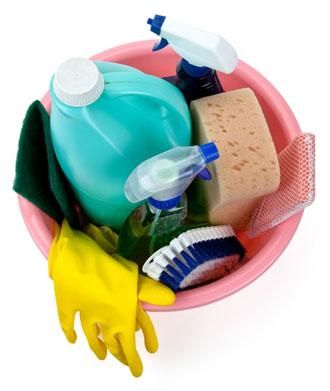This topic takes on average 55 minutes to read.
There are a number of interactive features in this resource:
 Biology
Biology
Ever since people realised that infectious diseases are caused by organisms such as bacteria, fungi and viruses, they have been trying to kill off the pathogens. Many different types of chemicals have been tried, some with more success than others. Chemicals which can destroy microorganisms such as bacteria, fungi or viruses and stop them infecting other people are known as antimicrobials. Successful antimicrobials include:
Chemicals such as bleach which can destroy bacteria, fungi and viruses. They are usually very toxic (poisonous). This means they can be used on surfaces and objects but not on the skin or inside the body. They can prevent the spread of infection from food preparation surfaces, toilets etc.

Disinfectants keep surfaces clean
© iStock photo.com
Chemicals which can be used to destroy microorganisms on the surface of the skin but are too toxic to be taken into the body. They can prevent the spread of infection into the body from cuts and sores on the skin. Antiseptic hand washes can prevent the spread of infection from one person to another through skin contact.
Chemicals which can be used to destroy bacteria and fungi inside the body. Antibacterials such as penicillin are used to treat bacterial infections. Antifungals are used to treat fungal infections.
In the past hundreds of thousands of people died in the UK every year from infectious diseases. This included many young children. Antibiotics have saved millions of lives around the world since they were first discovered. Some commonly used antibiotics include penicillin, amoxicillin, chloramphenicol, erythromycin and vancomycin.
Antibiotics do not destroy viruses. Because viruses only reproduce inside other cells, it is very difficult to develop drugs that kill viruses without also damaging the body's tissues.
Antibiotics, and other antimicrobials, can be tested to find out how well they work to destroy bacteria. Discs of filter paper are impregnated with the antimicrobial and are placed on the surface of a petri dish containing agar pre-impregnated with bacteria. When the bacteria grow, the effectiveness of the antimicrobial can be seen.
To see how antimicrobials are tested, click on each petri dish and allow each animation to run for 10-15 seconds.